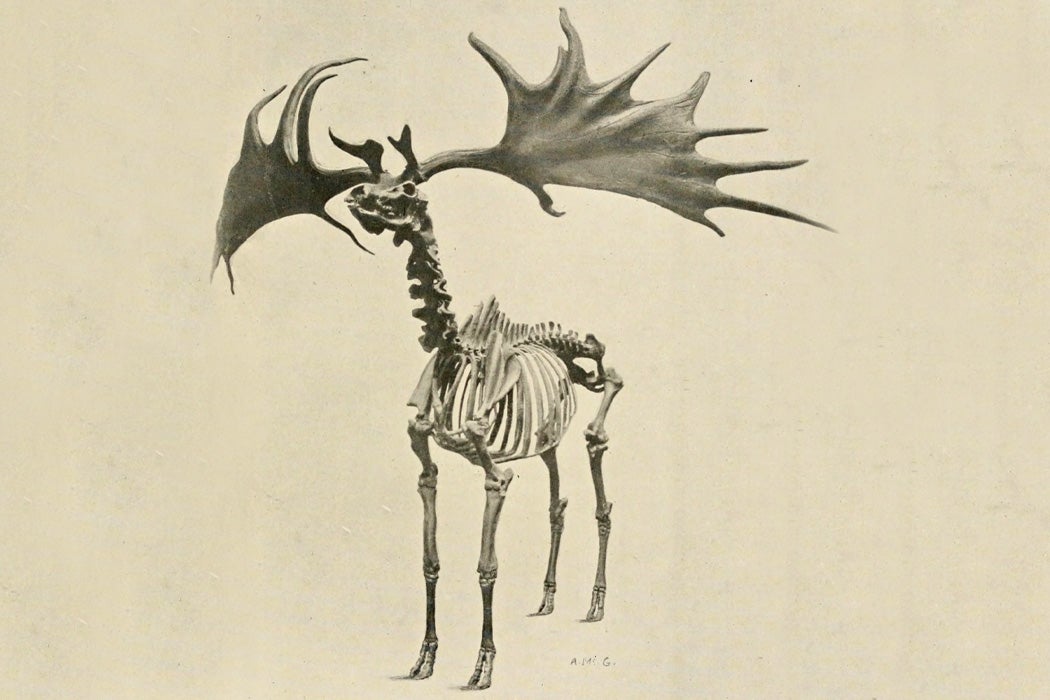Around 400,000 years ago, the Irish Elk (Megaloceros giganteus) roamed Pleistocene Europe and Asia. The species went extinct around 8,000 years ago. The name is something of a misnomer, since it was neither exclusively Irish nor an elk, but it was an impressively large deer, standing almost 7 feet at the shoulder. The animal is best known for its disproportionately huge antlers, which could be 12 feet from tip to tip. The cartoonish antlers were so striking that biologists have debated their purpose for years.
The mystery of the antlers even attracted the attention of famous evolutionary biologist Steven Jay Gould in 1974. A common belief at the time was that the antlers actually were responsible for the animal’s extinction. Fanciful theories, that Gould dismisses, supposed that the antlers caused a variety of health problems. A more realistic problem is that male deer shed their antlers and regrew them every year, at an enormous cost in energy. The weight of the antlers would have posed additional metabolic costs.
The idea that the antlers killed the elk came from a belief that the elk evolved slowly, growing a larger body and larger antlers with each successive iteration, until producing a final result that was very susceptible to environmental change. Darwin himself subscribed to this view. However, Gould says, there is no evidence at all for this idea. Instead, evidence suggests that the massive deer appeared quite rapidly in response to the changing environment, as the glaciers retreated.

So, why did these “bizarre” antlers develop? Gould examined the relationship between body size and antler size in a variety of deer. According to his results the giant antlers were, rather than exceptional, about the size that would be appropriate for such a large deer. Megaloceros lived in open country, where wide antlers would not impede the animal’s progress. For comparison, moose, about the same size, have much smaller antlers, maybe to facilitate movement through their forest habitat.
The assumption that the antlers were problematic rested on the assumption that the antlers had to be weapons, used either against predators or against other males. Gould notes that the unwieldy antlers would make poor weapons. However, their striking appearance would make them ideal for display, either to females or to demonstrate dominance over other males and secure access to breeding. In such a manner, the giant antlers, rather than being a hindrance, would be a selective advantage. The owners of larger antlers would have more offspring, cementing the trait in the population. The Irish Elk’s extinction was caused not by massive antlers, but by rapid changes in climate.
Weekly Newsletter
Forty-five years later, new research supports Gould’s assertion that the antlers did not drive Megaloceros’ extinction, but disagrees with Gould on another fundamental point: A new study has determined biomechanically how the elk might have been able to fight with their antlers after all. Regardless of how they were used, the antlers shouldn’t be unfairly maligned.







